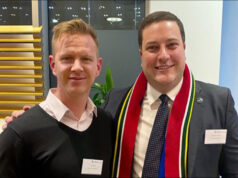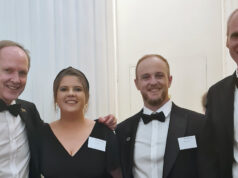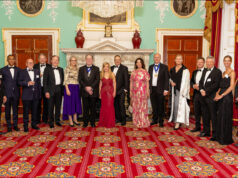Today communicating your sales message to your potential customers in a clear and effective way is even more important given the variety of advertising platforms available online.
Good sales copywriting can make the difference between keeping someone’s attention so they read and understand your message and want to take action, or skip away without even bothering to read past the first few lines. That decision to stay or go is taken within 10 seconds!
So what are the key elements of a good sales letter?
Paul Harrison sat down with copywriting expert Gillian Fox to get some of her insights on this topic.
Tip 1: The headline
The headline represents 80% of your potential sales. A good headline keeps four out of five people reading but a bad headline will lose the same number. It needs to be strong and engaging. The objective is to get people to consider the offer you’re making in your sales pitch. The three key elements of a headline are the “what” (what’s on offer), the “when” (when can they expect the results) and the “how” (how do they get it). Add in some curiosity or controversy and you’re on to a winner!
Tip 2: The offer
How you frame your offer takes people from just considering it to deciding to buy it. You’ve got to identify why your prospects need and want what you’re offering – how will your product or service change their lives, what’s the emotional cost of not having it and how much better will things get when they have it? Make it easy reading, and write as if you’re talking to one person. Keep paragraphs short, use linking phrases, sub-headings and graphics. By the end of the sales letter you’ll have taken them on a journey from suspicion all the way through to the “no-brainer” decision to buy. You’ll have shown them true value, offered free relevant bonuses and demonstrated why there’s no risk involved by spelling out your money-back guarantee.
Tip 3: Urgency
Without urgency there is no incentive to buy now, or “penalty” for not buying now. Remember that one third of your readers will be fence-sitters. By introducing urgency in the form of limited numbers of the product or a time-limited offer you’ll get half of that third into buying territory. Let me make this very clear, we’re talking ethical urgency – if you say the price will rise after a specific date, make sure it does. If you say there are only 100 seats available make sure that’s true. Finally, make your call to action clear and easy to follow.
Q&A: Gillian Fox answers Tracey Rissik’s questions on sales copywriting.

Why are sales letters always so long? Does anybody ever read them all the way through
A sales letter’s task is to present all the information in a readable and informative style – it’s like a conversation, so it has to anticipate all questions and objections as well as stating all the benefits and other information needed to bring the reader to an informed “yes” or “no” decision. Readers fall into different categories so you have to include content for the visual, auditory and kinaesthetic types. Highly detailed people will read right to the end, so always include a PS!
I’ve never written a headline – what are some good words to use in it?
I call them “power words” and my top 10 are: you, can, easily, discover, proven, guaranteed, secret, unique, finally, now.
I’ve heard it’s good to use bullet points – why do I need to include them?
Bullet points are easy on the eye – they stand out in the body copy and create curiosity in a short one or two line sentence.










